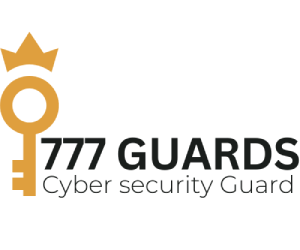Introduction: In an unpredictable world where physical security threats can emerge unexpectedly, the implementation of effective lockdown measures is paramount. Lockdown procedures serve as a crucial component in safeguarding individuals, buildings, and assets from potential harm during security incidents. This article explores the significance of lockdown measures in physical security, detailing their importance, components, and the role they play in mitigating threats.
BoLockdown Measures in Physical Securitydy:
- Defining Lockdown in Physical Security:
- Overview: Lockdown in the context of physical security refers to the strategic and rapid restriction of movement and access within a facility. This proactive measure aims to protect occupants and assets in the event of an external threat, such as an active shooter, terrorism, or other violent incidents.
- Objectives: The primary objectives of a lockdown are to minimize casualties, contain the threat, and provide a safe haven for individuals within the secured area.
- Immediate Response to Threats:
- Overview: Lockdown measures are designed to be initiated swiftly in response to imminent threats. Whether it’s an armed intruder, an act of terrorism, or any situation posing a danger to occupants, lockdown procedures provide a structured and effective response.
- Notification Systems: Implementing reliable notification systems, such as alarms, mass communication tools, and emergency alerts, ensures that occupants receive timely information to initiate the lockdown.
- Securing Entry Points:
- Overview: The effectiveness of a lockdown hinges on securing entry points to prevent unauthorized access. This involves swiftly locking doors, gates, and any other access points to create a physical barrier against potential threats.
- Access Control Systems: Access control systems, including electronic locks and key card systems, play a critical role in securing entry points during a lockdown. These systems can be controlled remotely to restrict access.
- Communication and Coordination:
- Overview: Clear and concise communication is pivotal during a lockdown. Establishing communication channels and protocols ensures that individuals within the secured area receive guidance and updates on the situation.
- Emergency Response Teams: Designate and train emergency response teams responsible for communication, coordination, and providing guidance to occupants during a lockdown.
- Safe Room Design and Utilization:
- Overview: Safe rooms or designated secure areas within a facility serve as sanctuaries during a lockdown. These spaces are fortified to withstand external threats and provide a haven for occupants until the situation is resolved.
- Construction and Equipping: Construct safe rooms with reinforced walls, secure doors, communication devices, and emergency supplies. Regular drills and training help occupants familiarize themselves with safe room locations and procedures.
- Regular Training and Drills:
- Overview: The effectiveness of lockdown measures relies on the preparedness and familiarity of occupants with the procedures. Regular training sessions and drills ensure that individuals respond quickly and efficiently during an actual security incident.
- Scenario-Based Exercises: Conduct scenario-based exercises to simulate various security threats and test the effectiveness of lockdown measures. These drills help identify areas for improvement and enhance overall readiness.
- Integration with Emergency Services:
- Overview: Collaboration with emergency services, such as law enforcement and first responders, is essential for a coordinated response. Integrating lockdown procedures with emergency services ensures a seamless and efficient resolution to the security incident.
- Emergency Response Plans: Develop and maintain strong relationships with local emergency services. Share detailed emergency response plans to facilitate a collaborative and coordinated effort during a lockdown.
In the realm of physical security, lockdown measures stand as a proactive and essential strategy for protecting lives and assets. Whether in educational institutions, corporate offices, or public spaces, the implementation of effective lockdown procedures can mitigate the impact of security threats. Through clear communication, swift response, and regular training, organizations can enhance their ability to navigate crises and safeguard the well-being of individuals within their premises. As the world continues to face evolving security challenges, prioritizing and refining lockdown measures becomes a crucial aspect of maintaining a resilient and secure environment.



